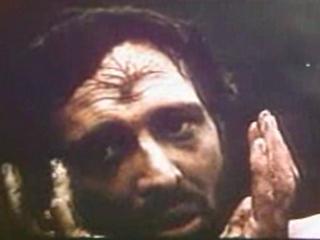
I remember reading that after one Steinbeck novel it is very difficult to resist devouring the rest. I finished the Grapes of Wrath and was hungry for more tales of 20th century Americana. In East of Eden, Steinbeck took the grand family narrative and populated it with his ancestors. The story is based on Steinbeck’s family history intertwined with mythological embellishments. The two are intertwined so subtly that what is true and what is not is indistinguishable, even the most unbelievable events take on an air of reality. According to the books blurb the two families are forced to relive the fall of man and the fratricide of Cain and Abel.
Although these Biblical stories are supposed to underpin the story, I found them an unnecessary accompaniment and sometimes confusingly obvious. The references offer little added validity to the story which often happens with such obvious reliance on previous works. The Trask sections are linked to the Cain and Abel story. First, the sons of Caleb Trask, Adam and Charles and then Adam’s sons, Caleb and Aron. The link is largely based in the competition of the sons for the love of the father, jealousy ensues with ill fate following behind it.
In the sections about the Hamiltons, I found a much more accessible character in Samuel Hamilton. Samuel is supposed to be the father of humanity, Adam. By far my favourite character, Samuel embodies the pure and untainted nature of the original man. Samuel and his family live in oppositional circumstances, the area which they farm is difficult and barren, where water is scarce. Samuel provides an image of Adam after the fall, dealing with the adversity of a post Edenic life. He maintains his personal goodness in dire circumstances.
The most difficult character in the novel is Cathy Trask. Steinbeck presents her as a self-sufficient psychopath who causes harm to whoever she chooses. She is beautiful yet deadly and her crosshairs eventually fall on Adam Trask. Cathy is not the most believable character in the novel, her actions like those of her whorehouse are at best rumours yet she embodies the primary malevolent force in the book. The novel is very androcentric with Cathy, the only independent female character being rendered as a vile and spiteful creature.
Although the novel could be construed as misogynistic, this approach speaks to the struggle of masculinity in today’s society. If we for the moment focus on the male characters, there is a lot to be said for what makes a good man, or person. On the building site, masculinity has evolved into a hyperrealised form of itself. It is the place where the most extreme forms of machoism can be identified. Samuel’s masculinity is not rooted in the dominance of women, number of sexual conquests or alpha male shows of aggression. He is a ‘good’ man from how he deals with adversity and struggles to survive in a world naturally geared towards our failure.
As a man it is easier for me to suggest this direction and to metaphorically sweep the Cathy problem under the carpet. There are definitely issues around Steinbeck’s presentation of women, yet I don’t consider this a reason to disregard this book as chauvinist drivel when there are, clearly, lessons in it to help aid the reversal of the devolution of masculinity.
Although it has its merits I wouldn’t consider East of Eden in the same league as The Grapes of Wrath. Although for Steinbeck it was his masterpiece its personal aspect leaves it slightly inaccessible, lacking the humanity and the bleak struggle essential to his early work.